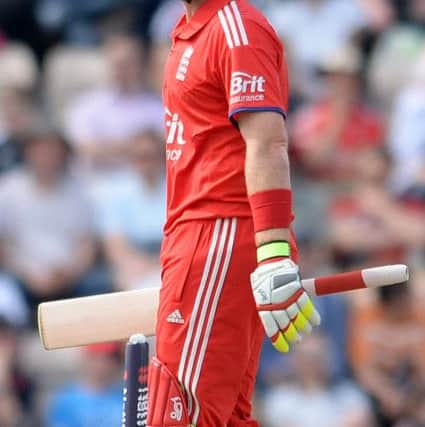The Ashes Column: Ian Bell is a victim of his own versatility ahead of Third Test


Bell is a victim of his own versatility. He can bat anywhere, but he’d score more runs if his role in the side didn’t change so often.
In 2013, batting at five, Bell hit three Ashes centuries. Back then, he was the middle order rock, doing for England, what Steve Waugh once did for Australia. Grinding out scores, marshalling the tail towards big totals.
Advertisement
Hide AdAdvertisement
Hide AdThe following winter, in Australia, the England team imploded, Pietersen sacked and Bell asked to take KP’s place at four, as the team’s enforcer. This year, Bell averages 20 in Tests. Now he has to take on Steven Smith, Australia’s main man.


Over the years, Bell has been up and down the England batting order more times than a skinflint on a dinner date. He’s been in the Ricky Ponting role before, even scored his Test best 235 against India, at number three.
Bell’s best performances come down the order, though. At five and six he averages 52.29 with 15 hundreds. At three and four its 35.84 and six hundreds.
Australian batsman tend to be given a role. Do well and they keep it. Ricky Ponting batted number three in 113 Tests, Greg Chappell went in three or four in 77 of his 87, brother, Ian, was at three for 54 out of 75 Tests. Mark Waugh was at four in 110 Tests, Steve, played almost all his Tests at five or six.
Advertisement
Hide AdAdvertisement
Hide AdEngland cricket selectors love to chop and change. David Gower, Mike Gatting and Allan Lamb all had stints at three, four and five. So did Ken Barrington, Colin Cowdrey and Tom Graveney. Graveney and Cowdrey also had a go at opening.
Alec Stewart batted everywhere from one to seven, Michael Vaughan started at four, moved up to open, then down to three or four, depending on who else was in the team. Joe Root has only played 29 Tests and already he’s batted in six different positions.
Even the very best players need to know their role within a team to perform at their best. It’s like playing Wayne Rooney in midfield for three months and then expecting him to score a hat trick in his first game back as a striker
England chop and change, partly because they’ve never known what to do at number three. Back in the day, solid nurdlers like John Edrich, David Steele and Chris Tavare could grind out a platform on bowler-friendly English pitches. In recent times, Jonathan Trott, and last season, Gary Ballance, played the holding role, well enough to make Roy Hodgson jealous.
Advertisement
Hide AdAdvertisement
Hide AdAlways, though, there is the spectre, of the opposition number three. The likes of Ponting, Viv Richards, and now Steven Smith. Brave, uncompromising stroke players brought up on fast, true wickets who see batting at number three as an opportunity rather than a challenge.
England have, occasionally, thrown their star man in, to take the fight to the opposition. David Gower scored 732 Ashes runs, at three, in 1985. Ted Dexter, equally averaged over fifty at first drop, in the sixties.
Unfortunately, as Kevin Pietersen will tell you, England selectors tend to cast a wary eye over their more flamboyant stars. The likes of Gower and Dexter were never more than one rash shot away from being sent back down the order.
If Ian Bell makes one of his characteristically stylish hundreds at Edgbaston, next week, he’ll no doubt, be lauded as the next Ponting. If he’s out wafting nervously, early on, or carelessly, once he’s set, and England lose; the selectors will no doubt start looking at the ECB Performance Programme graduates for their next anchor-man.